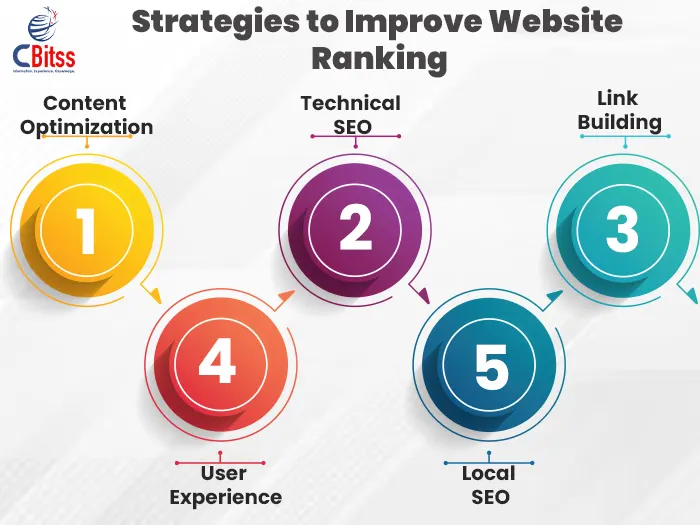Table of Contents
ToggleIntroduction
It is very important to have knowledge of how Google ranks your site if you are running an online business or if you manage a site or blog. Performing regular checks ensures that one realizes the position that a particular website occupies. It is so that changes in its visibility in search engine results can be identified, leading to changes in traffic and, hence, leads. Here in this all-inclusive article, we will shed some light on different approaches that would enable you to check website ranking on Google. It will give you an impetus to enhance your SEO and online presence.
Why It is Important to Monitor the Ranking of the Website?
As we see, there are hundreds of millions now, and different kinds of sites and different kinds of topics. It is very important to get on the first page in Google for any site. It is because it dramatically increases organic traffic. The ranking analysis also assists you in evaluating your position concerning your competitors. It also helps in determining certain critical aspects of your website that can be improved. To achieve goals, understand how to track and read Google rankings effectively.
If your business aims to achieve first-page SEO ranking, consistent ranking checks are essential to stay ahead of competitors and optimize your presence continuously.

What are the Google Search Ranking Factors?
Search engine ranking is based on factors like keywords, backlinks, title relevance, quality of relevant sites, site load time, and many others to place websites on the search list. While Google doesn’t disclose the exact details of its algorithm, several key factors influence rankings:
- Relevance: With reference to the theory, it concerns how closely your content is related to the particular search query.
- Authority: The reliability of the site that you are creating for the public.
- User Experience: That ranges from page load speed, its friendliness to a mobile device, and even the interactions the customers had with it.
- Backlinks: Backlinks from other website sources that will help in proving that your website is an authority site and very popular among net users.
- Content Quality: New or fresh, originality, and how deep the article’s coverage is.
- Technical SEO: Tweaks such as meta tags, rich snippets, and site elements, including painting, construction, and design.
To explore the ranking factors complete list, one must dive deeper into all 200+ Google ranking signals.
If you have to track the ranking of your website, you can assess how well you are doing in terms of optimizing for these factors. And it will help you to make changes to your SEO campaign.
Methods to Check Website Ranking on Google
Manual Search:
The easiest way to find out how your website behaves and where it stands when it comes to particular keywords is to type those keywords directly into the Google search bar. In this case, let’s type in: digital marketing. Do a quick search on Google by typing the keywords directly in the search bar. Follow these steps:
1: Clear your cache and cookies or better still, open a new incognito or private browsing window to avoid manipulating your sponsored search results.
2: Type your targeted keyword(s) in the Google Search Bar.
3: Go to the lower part of the screen where you check the results of the search engine where your website is present.
Manual searches may not provide authentic results due to user privileges and the dynamic nature of search rankings.
If you are unsure which keywords to test manually, you can explore some keyword planner usage tips to identify profitable and relevant terms.
Google Search Console:
Google Search Console (previously Webmaster Tools) is a service that works as a part of Google Analytics and helps to monitor the site’s presence in Google Search. Follow these steps to check your website’s ranking using GSC:
1: If you have an account in Google Search Console, then you have to log in to it.
2: Click on the “Performance” report option in the left-hand side vertical menu listing.
3: Check the number of clicks, impressions, average position, and CTR in a certain query and pages.
This means that you will be able to view the results in terms of dates, country, device type, and many more. This allows GSC to offer good analytics on the results, which you are getting, hence making it easy for you to monitor and manage your SEO effectively.
To streamline your ranking audits, visit this full guide on how to check website ranking on Google.
Find out how your site performs on Google with real-time ranking insights.
Third-Party SEO Tools:
There are many third-party SEO services out there, which include terrific rank tracking factors. Thereby offering in-depth information on your site’s performance across every search engine, including Google. Most of the commonly used tools are as follows: SEMrush, Ahrefs, Moz, and Rank Ranger. Here’s how to check your website’s ranking using SEMrush as an example:
1: To begin, open the SEMrush tool and log in to your account with your personal details and the domain of your choice.
2: The position tracking tool can be found in the bookmark manager list.
3: Then, enter your target keywords and select the search engine to be used, for instance, Google.
4: Here, you can look at the general editorial and region-specific rank, monthly searches, and Global Search Volume as well as SERP features and your competitor.
There are many free and paid services available. SEO tools can be easily integrated to provide a comprehensive solution. For tech-savvy professionals, aligning this with top data science certification strategies can provide deeper search intent insights.
Interpreting and Analyzing Ranking Data
- Monitor Trends: Look at positions within a given period, such as the MSD, day, week, or month, to see trends and possible openings.
- Keyword Performance: Assess how beneficial certain keywords are in regard to traffic generation and sales, as opposed to ones that need improvements.
- Competitor Analysis: This is because when we compare the websites or company’s ranking to that of other competitors, we are able to see its competitive position.
- SERP Features: Track featured snippets, knowledge panels, and other SERP features where your website appears.
Taking a look at the rankings as a rule, you can make specific alterations aimed at changing your content, fixing some technical issues, and upgrading your overall SEO excellence.
If your site lags in performance, start with a technical SEO fix to improve page loading speed, which directly impacts your ranking.
Analyze keyword rankings and performance to improve your website’s search visibility.
Strategies to Improve Website Ranking
Ranking on Google, especially on the higher tiers, is not something that one achieves and then waits for the traffic to flow in. But a constant process of improvement and adjustment. Implement these strategies based on your ranking analysis:
- Content Optimization: Develop well-researched, relevant content pieces that focus on aspects of interest and relevance to users while including desired target terms as much as possible.
- Technical SEO: Make sure that your website is technically properly set, optimized for speed, mobile-friendly, and structured.
- Link Building: Try to get backlinks from other established sites to improve your own site’s authoritative reference status.
- User Experience: Optimization of user interface and Chinese language to ensure that the website is more user-friendly and captivating to visitors, thus reducing the bounce rates.
- Local SEO: Use regional keywords when developing your site if you have a physical structure or if you are based in certain regions.
New developers can align content goals with their app launch goals by learning how to publish Flutter apps online, enhancing brand visibility on mobile-first platforms.
Meanwhile, IT professionals can integrate long-term SEO with cloud computing career ideas to align technical growth and organic reach.
By monitoring your ranking data and the trends that are common in the SEO world, you will be in a position to make periodic changes or adjustments to your SEO plan. Thus optimizing for growth.
Conclusion
Website ranking on Google is crucial for brand management and SEO. You can use the information provided in the Google Search Console, data from third-party tools, and perform simple queries. Search queries reveal user behavior, website visibility, and optimization opportunities. Learn to accept the process of refining the techniques used in website ranking monitoring. It is crucial to your overall site optimization endeavor. Then see your website start flying high in overall search result rankings.

J. Julia Kamei is a professional content writer with 4+ years’ experience creating impactful content for clients in the USA, India, Canada, the UK, and Europe. An M.A. History graduate, she specializes in immigration, business, IT, digital marketing, AI, and Data Science. She also mentors students for international education and research.







